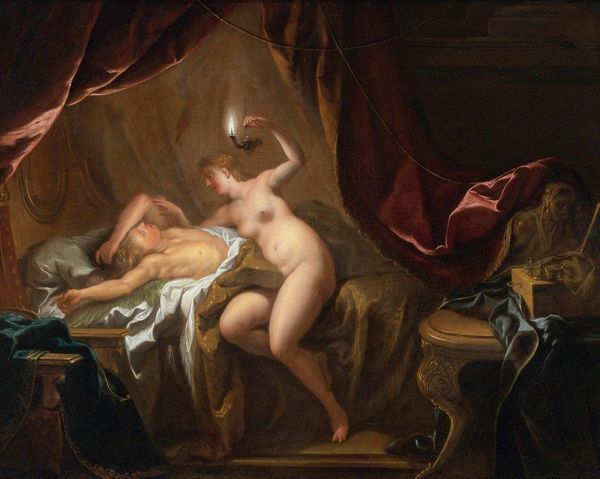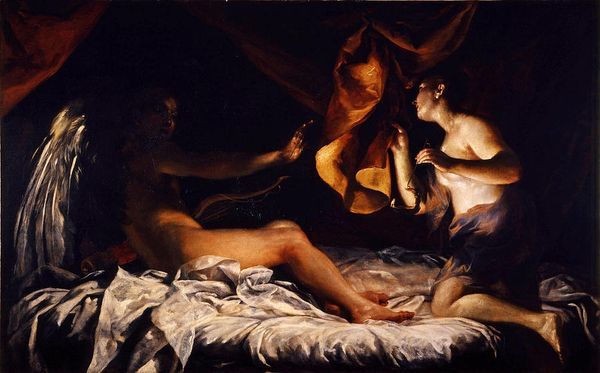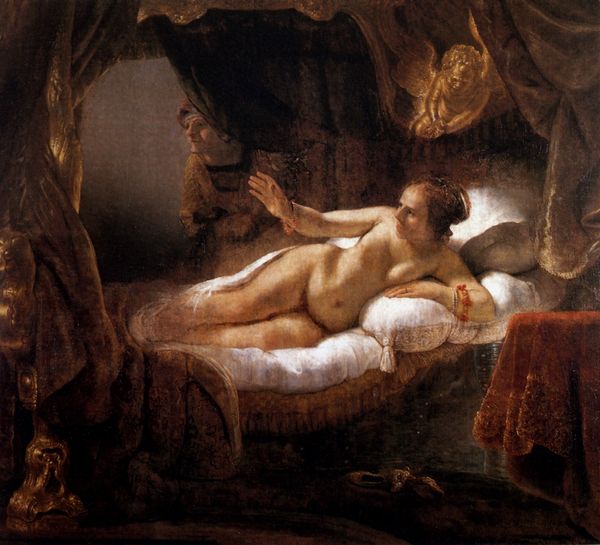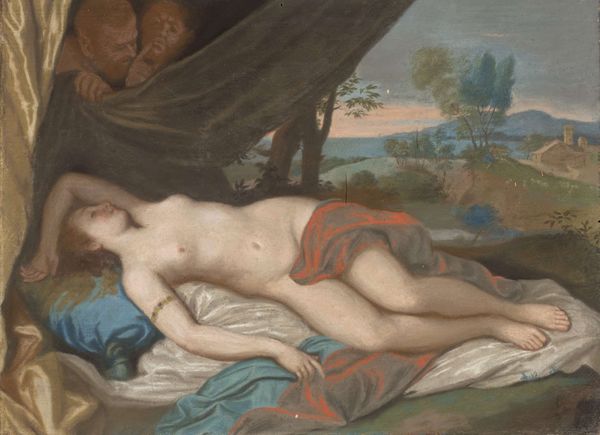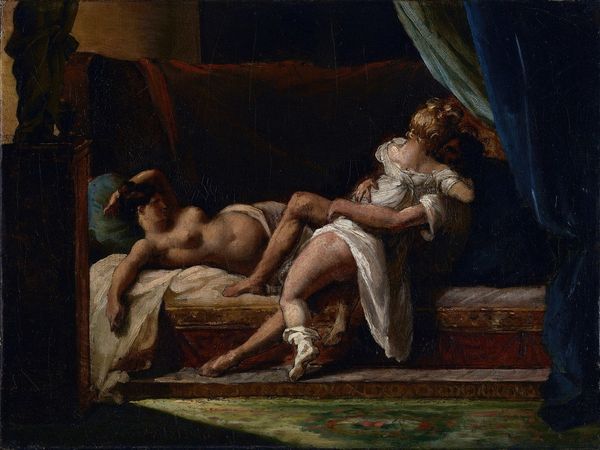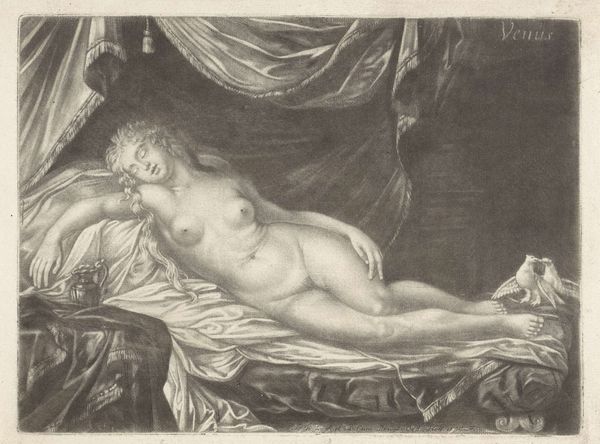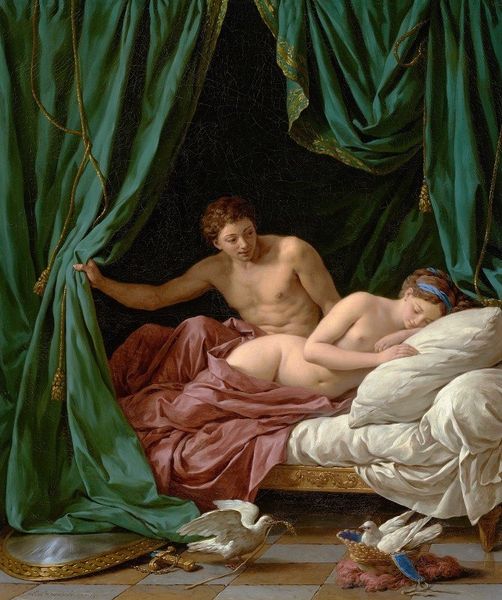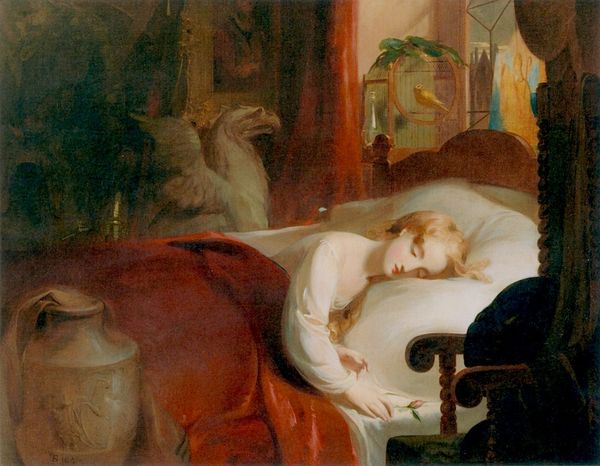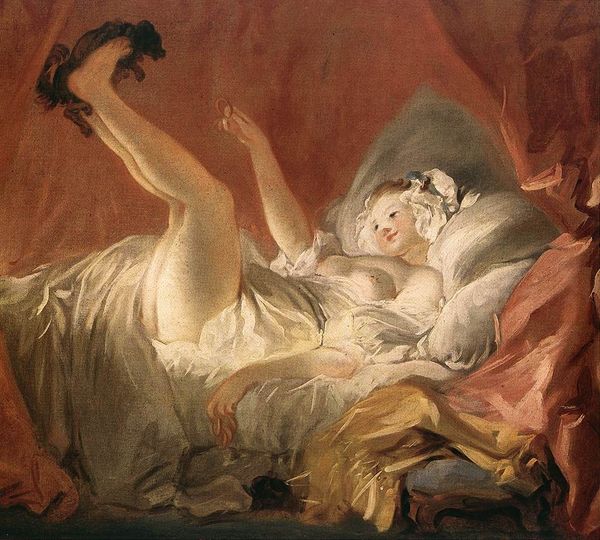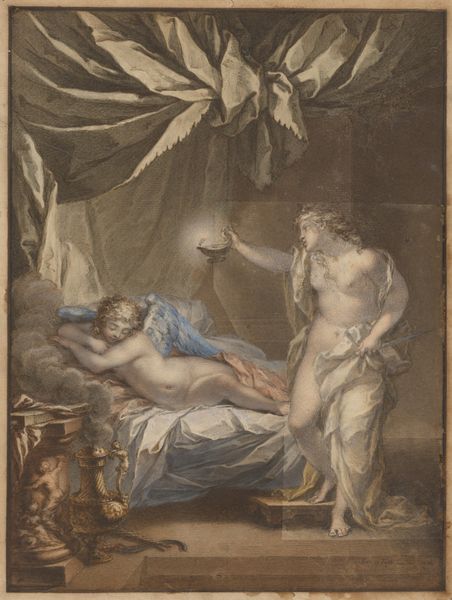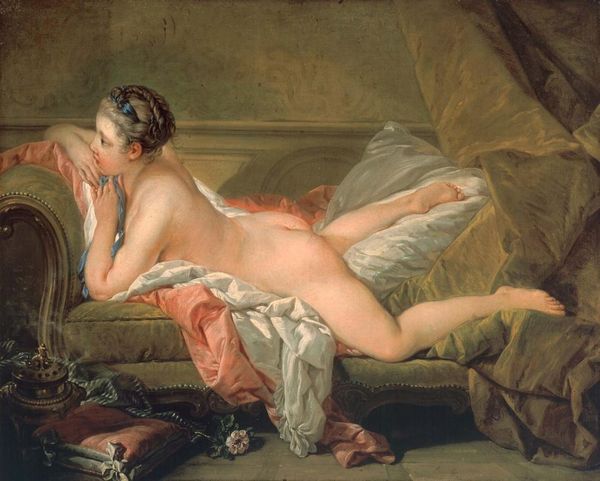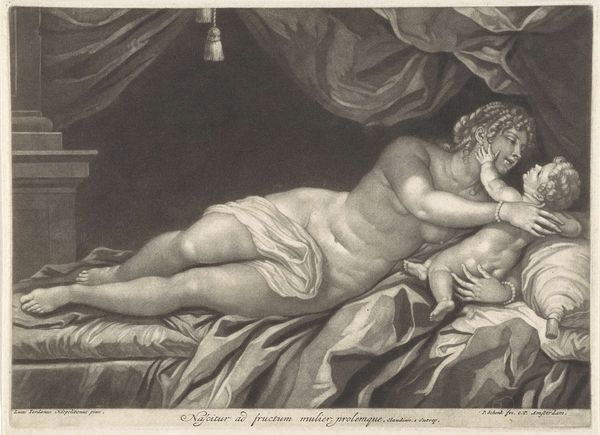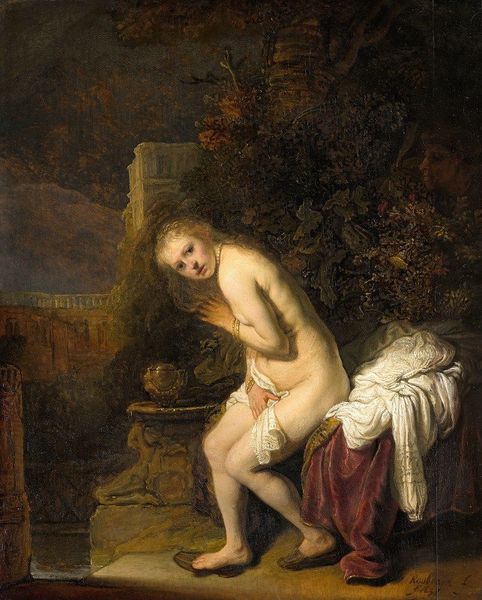
painting, oil-paint
#
figurative
#
allegory
#
baroque
#
painting
#
oil-paint
#
oil painting
#
history-painting
#
italian-renaissance
#
nude
#
portrait art
#
erotic-art
Copyright: Public Domain: Artvee
Curator: Guercino's "The Death of Cleopatra," completed in 1648 using oil paints, offers a captivating depiction of the Egyptian queen's demise. Editor: My first impression is the stark contrast between the opulent velvet drapery and Cleopatra's pallid, almost peaceful stillness. It's quite a theatrical, yet intimate scene. Curator: Indeed. The staging of death has been a frequent occurrence within art, often depicting historical moments through an elite lens. Cleopatra, even in death, is framed by the trappings of her power. Editor: And isn't the power dynamic fascinating here? She chose her death, wielding agency in a world that otherwise constricted female rule. The asp becomes almost a tool of liberation, wouldn't you say? It reminds me a little bit of Artemisia Gentileschi and her exploration of empowered women reclaiming what was rightfully theirs in patriarchal systems. Curator: From a historical perspective, the choice to depict Cleopatra's suicide was laden with symbolic weight. Artists were keen to reference a glorious past, but equally intent on issuing warnings about unchecked female ambition and power. In fact, the visual trope of the seductive woman could then become politically charged and rather subversive. Editor: Right, like portraying female figures such as Eve and Judith within artwork. Also, this specific composition is also really interesting, how the dramatic red drapes juxtapose against her nude, pale skin, giving an additional sense of visual drama to an already high-stakes scene. Curator: These pictorial choices reflect societal anxieties that continued to reverberate well into the baroque period and even beyond it. They served not only as morality tales for those in positions of influence, they highlighted the political forces influencing art’s role in public life. Editor: Exactly, and I see a precursor to how death would later be reframed again, decades later. The depiction of this scene, charged with the visual aesthetics that shaped social views, offers a potent moment to consider female power and liberation. It makes one ponder how we continue to negotiate representations of gendered authority today. Curator: An examination of the circumstances around art provides us insight into how a collective and sometimes contradictory cultural imagination operates. Editor: Precisely. Considering the socio-historical complexities helps us connect Guercino's artistic execution and vision to its deeper significance within the period's cultural discourse.
Comments
No comments
Be the first to comment and join the conversation on the ultimate creative platform.
